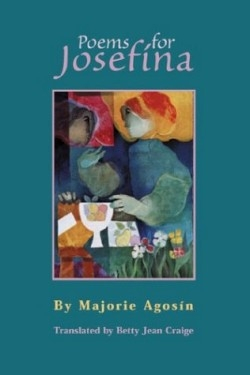Poemas para Josefina
A Jewish family, having learned over generations to call Chile home and Spanish a beloved language, is ruptured by political turmoil. Some are forced into exile, but one woman adamantly stays in Chile to build a life out of her own intrepid will. The author, the granddaughter of that valiant woman, has transformed grief over her death into a memorial of her life.
A prose introduction with black-and-white photos of the family, especially Agosín’s grandmother, Josefina, lends both charm and realism to the work. In terms of genre, the poems that follow might be called “confessional” poetry, but they are saved from being maudlin by the elegant linguistic skills of the poet. Her use of metaphor flows as naturally as the tides “where the sea / Conducts ceremonies / Of departure and return / … I planted a rosebush … That carries your name / Josefina / … Here on Maine’s coast … Josefina the rugosa rose / Celebrates the seasons / And shows us how / To converse with the dead.”
Further evidence of Agosin’s mastery of metaphor is the way she manages to turn inanimate objects into living reminders of her grandmother’s personality: “Of all your belongings / I asked only for the shawl / That cloaked your bent shoulders / … The sinuously curved shawl / Reflected your body / Became your countenance / Your color … your breath.”
The book constitutes a single unit. Any one poem taken from the whole might appear to exist in a vacuum, but the entire collection takes on the semblance of time passing, when any given moment only achieves the richness of its particular significance in terms of what preceded and followed it. The entire gestalt is necessary to enable the single emotions dealt with in one poem after another to take on their full power.
The translations are completely literal, which unfortunately robs them of some of the deep emotion inherent in the author’s use of certain Spanish phrasing that only has overtones for native speakers and is essentially untranslatable. It is this specificity in the cultural significance of certain words and phrases that must have inspired the author to write the originals in Spanish and ask a native English speaker to do the translations.
Agosín, a Professor of Spanish at Wellesley College, has published more than two dozen books, in both Spanish and English. Her translator, another distinguished academic, has endowed the translations with a pleasingly American vernacular. However, the book will be most appreciated by readers with at least a working knowledge of both languages.
Reviewed by
Sandy McKinney
Disclosure: This article is not an endorsement, but a review. The publisher of this book provided free copies of the book to have their book reviewed by a professional reviewer. No fee was paid by the publisher for this review. Foreword Reviews only recommends books that we love. Foreword Magazine, Inc. is disclosing this in accordance with the Federal Trade Commission’s 16 CFR, Part 255.

